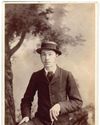Angela Nicholson takes a look at the most common myths surrounding mirrorless cameras – and lays them to rest.

1 They have small sensors
Although there have been a few smaller format mirrorless cameras such as the tiny Pentax Q series and the Nikon 1 range, the majority of mirrorless cameras use the same Four Thirds, APS-C and full-frame-sized sensors as are found in most DSLRs. What’s more, the recently launched Hasselblad X1D and Fujifi lm GFX 50S use the same 43.8x32.9mm sensor as the Pentax 645Z, which means they’re medium format mirrorless cameras.
2 They are aimed at beginners
There are mirrorless system cameras that are suitable for use by a wide range of photographers, including professionals. Thanks to its small size and detail resolution, the Sony A7R II, for example, has proved popular with landscape and fashion photographers, while many street, portrait and lifestyle photographers love the Fuji X-T2. The Olympus OM-D E-M1 is also popular.
3 They lack control for video
The trend for shooting video on smaller/stills cameras might have started with SLRs such as the Canon EOS 5D Mark II but compact system cameras such as the Sony A7S, A7S II, and Panasonic GH4 and GH5 have really raised the game. In addition to features such as focus peaking, zebra display and Time Code, they also offer gamma control to extend dynamic range, and gamma display assist so you can see how video could appear after a contrast curve is applied. Many CSCs also offer control over audio, and have both headphone and mic ports so you can record higher quality sound.
4 They have low pixel counts
This story is from the {{IssueName}} edition of {{MagazineName}}.
Start your 7-day Magzter GOLD free trial to access thousands of curated premium stories, and 9,000+ magazines and newspapers.
Already a subscriber ? Sign In
This story is from the {{IssueName}} edition of {{MagazineName}}.
Start your 7-day Magzter GOLD free trial to access thousands of curated premium stories, and 9,000+ magazines and newspapers.
Already a subscriber? Sign In

140 years of change
AP has become the world’s oldest surviving consumer photo magazine because we have moved with the times, says Nigel Atherton

Preserving history in platinum
A deep dive into the meticulous art of platinum printing, and the collaboration between the Royal Geographical Society and Salto Ulbeek. Mike Crawford explores how they brought historical photographs to life with enduring beauty and precision

Life in the past lane
What was life like for an amateur photographer in 1884? John Wade takes a trip back in time

Choice cuts
How many trillions of photographs must have been taken in the past 140 years? Amy Davies asked some of our regular contributors for their favourites....a difficult task, to say the least

How good a camera can you buy for just £140?
Three members of the AP team see what they can find for the money

Round Five: The Best of the Rest
The APOY judges choose their favourite images that didn’t make the top ten of our Landscapes category

Amateur Photographer of the Year
Here are the top ten images uploaded to Photocrowd from Round Five, Landscapes, with comments by the AP team and our guest judge

FILM STARS A lifetime of landmarks
Cameras that hit the headlines between then and now. John Wade is your guide

140 years of Amateur Photographer
As AP celebrates its 140th birthday next month, Nigel Atherton looks back at its glorious past

John Wade considers...World War II: Home Front 1940, by A.J O'Brien
Say the word 'Wall's' to those of a certain age and two things spring to mind: sausages and ice cream.